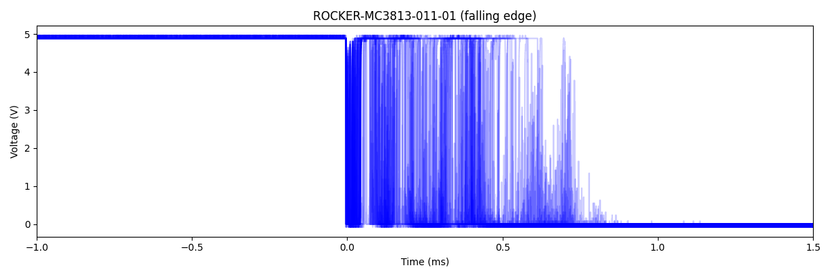@bristle for your consideration https://www.youtube.com/watch?v=lhhQDltumNo
Posting my EE stuff here, mostly embedded and FPGA work.
KDE creates a safe haven for Windows 10 exiles.
In the context of the @Endof10 campaign, we have created a new "for" page, this time "for Windows 10 exiles":
https://kde.org/for/w10-exiles/
In it we explain how Linux with Plasma can help users escape the deranged cycle of having to buy a new computer every time Microsoft force-upgrades their operating system.
Using gedit as an IDE is kinda silly, but they at least understand the value of making the tab spacing option quick and easy to change. "Tabs to indent, spaces to align" benefits greatly from the ability to grow or shrink your indents quickly.
@soatok science fiction? no, science coming soon
@soatok be the change you want to see
it's time for full-dive soft robotic pooltoy furries
@soatok As an electrical engineer, this is also why I hate HDMI.
Tariffs just got real: our first $36K bill with 125% + 20% + 25% markup hits hard 💸. These are upfront costs - due before selling a single unit - causing serious cash flow strain, price increases, read more! 📦 http://adafruit.com/tariffbill
I just beat the BSEE game over the weekend with a 3.767 overall score in the main storyline
but they added a subscription fee you can't opt out of
@gsuberland What's your go-to method for switch debouncing?
y'know when you want to implement switch debouncing, and every single time you realise you haven't got a clue what the bouncing actually looks like and end up just fudging the numbers until stuff seems to mostly work as intended?
well here's some actual data! I took a bunch of different switches I had laying around and measured their bouncing behaviour, during both close and open.
graphs in the repo, CSV data available in releases.
I want to speak to the incompetent engineer who made wisdom teeth get impacted
once these ones stop nuisance triggering the bump sensors they're rubbing against the signal wires to
furiously scribbling on a prescription pad
here you go
hands you the BOM for your robot HRT
New year, new Revision - April 18th to 21st at the E Werk!
Our website is live, and you can already sign-up at
https://2025.revision-party.net/
@jackemled I assume the gas station attendant won't take kindly to you bringing a breadboard circuit to mess with their gas pumps
@jackemled did it look like this? https://www.heyrick.co.uk/blog/index.php?diary=20151023
@smellsofbikes I can go deeper into either the theoretical or practical side if you want, but I don't want to over-explain things you already know.
@smellsofbikes I also agree with @ZeroEcks here. You need a cross-sectional area for the multimeter probes to make contact with the ball bearing. A flattened or pointed probe contacting a perfect sphere only makes contact at a single point (and therefore no cross-sectional area) which would make the resistance of the contact infinite regardless of resistivity, and everything else in series becomes insignificant.
@smellsofbikes My first guess when you're seeing unexpectedly high resistance readings would always be poor contact between the probes and the test points, like @Dangerous_beans said.
It's hard to get good contact on something spherical like a ball bearing (add pressure and the probes just slide away) but just having the probes rest against the metal leaves a small and variable air gap that's enough to inflate the measured resistance, which is probably what you're experiencing.
If you're measuring the file, I'd say it's because of this for sure, but even if you're just scratching the ball bearing with the file, the scratches might be helping to keep the probes from sliding off.
Before I say what I think it is, are you saying you're measuring the file in the second measurement, or making scratches in the ball bearing with the file, and then measuring at the scratched parts of the ball bearing?

